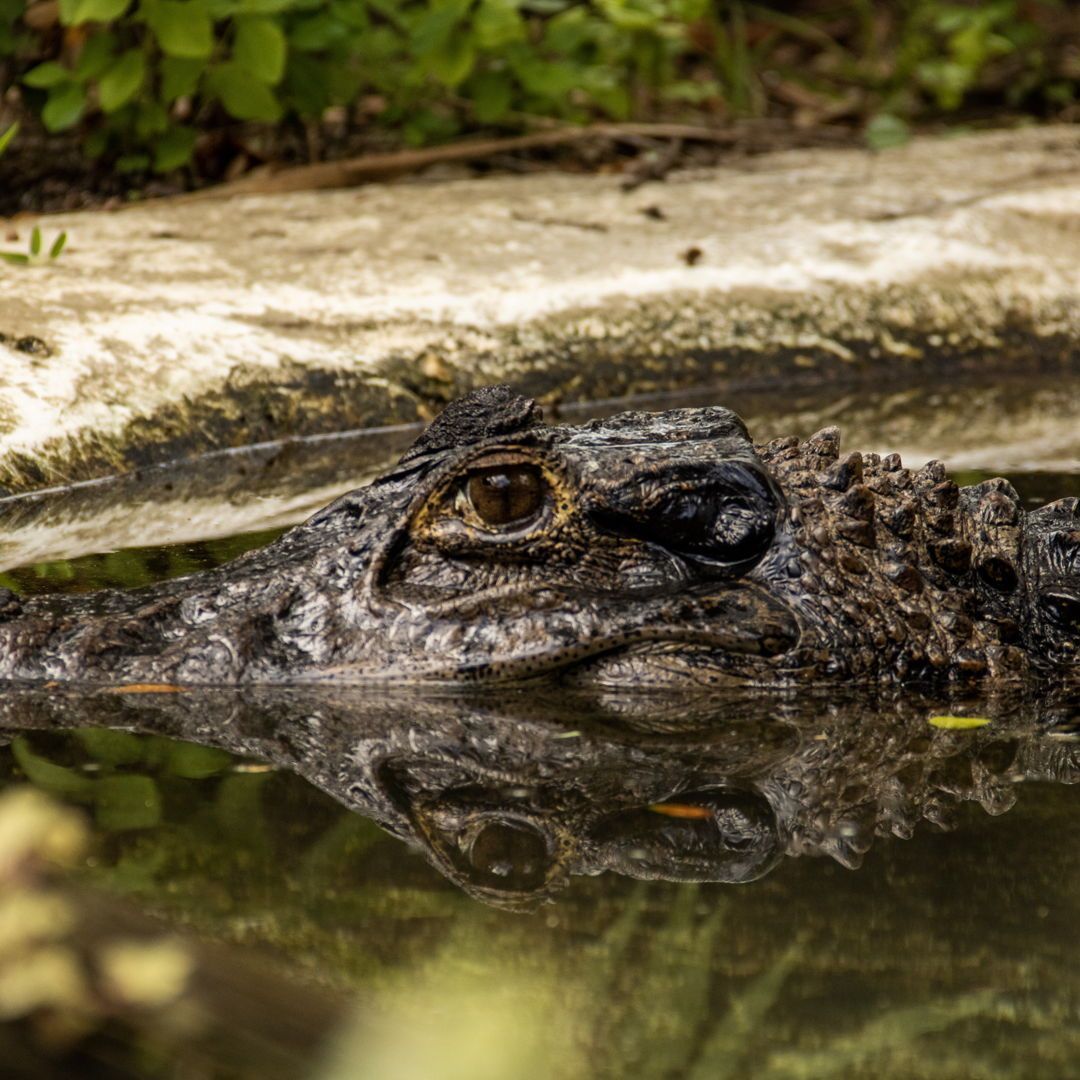Summary:
– Black caimans are part of the alligator family and are found in Central and South America and Mexico.
– They are the largest caimans and have faced near extinction due to hunting and poaching.
– Conservation programs have helped the species return, and they are now listed as conservation-dependent by the IUCN.
Regarding formidable predators, few can match the sheer power and awe-inspiring presence of the Black Caiman. These incredible reptiles, part of the alligator family, can be as big as American alligators and sometimes even more! With their sleek, dark bodies and piercing eyes, these caimans are truly a sight to behold.
Found in the freshwater rivers and lakes of the Amazon River Basin in South America, Black Caimans, scientifically known as Melanosuchus niger, are the largest of the caimans. Growing up to 13-16 feet in length, they are often mistaken for their American cousins, but their characteristic black color sets them apart.
At one point, Black Caimans faced a dire threat to their survival. The demand for their exquisite skins led to rampant hunting and poaching, pushing them to extinction. However, these incredible creatures are making a remarkable comeback thanks to dedicated conservation efforts.
Conservation programs have taken significant strides towards protecting and preserving Black Caimans. The International Union for Conservation of Nature (IUCN) has listed them as Conservation Dependent, a testament to the progress in safeguarding this magnificent species. These caimans are given a fighting chance through the collective efforts of scientists, wildlife enthusiasts, and conservation organizations.
The revival of Black Caimans is an inspiring tale of resilience and the power of conservation. Through a combination of measures such as habitat preservation, anti-poaching patrols, and public awareness campaigns, their populations have started to rebound. This success story serves as a reminder of the importance of raising awareness and taking action to protect our planet’s biodiversity.
One of the most fascinating aspects of Black Caimans is their role as apex predators in their ecosystem. These mighty reptiles have a powerful bite force, capable of easily taking down large prey. They feed on various animals, including fish, birds, reptiles, and mammals, making them a vital part of the food chain in their habitat. Their impressive size and predatory skills command respect from fellow animals and humans.
Moreover, Black Caimans are also known for their unique nesting habits. During the breeding season, typically between March and April, females construct nests using vegetation and debris near the water. These nests, known as “caiman mounds,” provide a haven for incubating eggs. After a gestation period of around 90 days, the eggs hatch, and the young caimans embark on their journey into the wild.
It is essential to recognize the interconnectedness of all species in nature, and Black Caimans play a vital role in maintaining the delicate balance of their environment. As apex predators, they help regulate the population of their prey, preventing overpopulation that could negatively impact the ecosystem.
Encountering a Black Caiman in the wild is an experience like no other. Their majestic presence and raw power inspire a sense of reverence for the natural world. However, it is crucial to remember that these creatures are best observed from a safe distance. Respect for their habitat and adherence to ethical wildlife viewing practices are paramount to their conservation.
In conclusion, Black Caimans are a mesmerizing species that captivates with their size, strength, and beauty. Once on the brink of extinction, these apex predators have made a remarkable comeback, thanks to dedicated conservation efforts. We are responsible for supporting these initiatives and protecting the biodiversity that makes our planet thrive. The story of the Black Caiman serves as a powerful reminder that with collective action, we can make a lasting impact on preserving our natural world.
*****
Source Description
Black Caimans can be just as BIG as American Alligators, and sometimes more! 🐊 Caimans are part of the alligator family (there are 6 different types) and are found in Central and South America and Mexico (with a few in South Florida, but they’re not native to Florida).
🐊 Scientific name: Melanosuchus niger
🌎 Found: Freshwater rivers and the Amazon River Basin lakes, in South America.
🐊 They are the largest caimans, and at one time, were hunted/poached to near extinction for their skins. Conservation programs are seeing a comeback for this beautiful caiman species, and it is IUCN-listed as Conservation Dependent
📷 Jen Brueggen Photography

